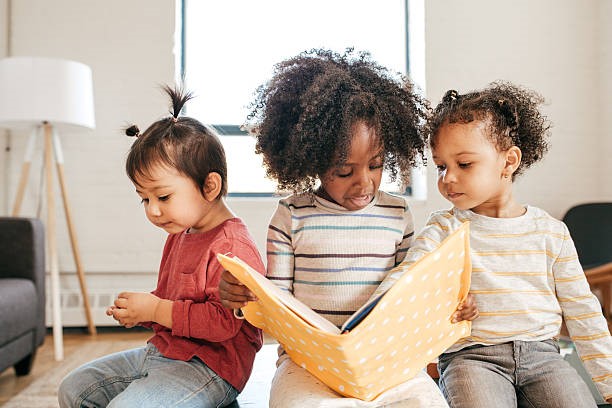Teaching and Learning Approaches
A multilingual approach
A multilingual approach supports the learning of bilingual and multilingual children, and celebrates home languages. This approach recognises that young children have a natural ability to learn languages, and takes advantage of this ability by introducing children to multiple languages simultaneously – the school language and supporting their home languages.
|
A multilingual approach also promotes inclusivity. Multilingual, including bilingual, learning in early years has cognitive, as well as cultural, advantages. It has been associated with enhanced awareness of linguistic structures, improved
listening, problem-solving and critical-thinking skills, as well as improved memory, concentration and the ability to multi-task. See Cambridge principles into practice: languages guide for schools. |
Learning a second or additional language helps children lay foundation for cultural awareness and understanding, which can broaden their perception of the world. Children enjoy discovering how young people from other countries and cultures live. Identifying similarities and differences in their lifestyles puts children at the centre of their learning, making it personal and motivating.
Second, or additional, languages help children understand what it means to be a global citizen, and proficiency in one or more languages makes it easier for children to communicate and exchange experiences with people from other cultural backgrounds. Encouraging children to reflect on their own and other languages and cultures helps them make connections and develop openness and curiosity.
In a multilingual approach, the focus is not only on teaching the child how to speak different languages, but also on exposing them to different cultures and ways of thinking. This can be achieved through language-rich environments, where multiple languages are used and children are encouraged to communicate in different languages, as well as through the use of books, music, and other resources that reflect the cultures of the languages being taught.

In early years, it is especially important that children’s home languages are valued alongside the language of teaching and learning - the ‘school language’. This reflects the significant role that home language has in developing a child’s sense of identity.
It also reflects the need to be more flexible about the language that is initially accepted when a child enters your early years setting, if the school language is less familiar than their home language. Children are more likely to embrace multilingualism when they see it as positive and valuable. Encouraging children to speak and use their home language can boost their confidence and help them maintain their cultural identity.
Supporting young multilingual learners requires a holistic approach that takes into account the child's individual needs, home language, and cultural background.
|
To support multilingual children in your setting, you should consider the following three areas:
|
This video gives further information about each of the areas:
Video transcript - A multilingual approach
There are other ways of supporting multilingual children:
- Provide opportunities for language practice: Young multilingual children need opportunities to practise their language skills in a supportive and interactive environment. This can be through conversation, games, and other activities that encourage language use.
- Use authentic materials: Using authentic materials, such as books, songs and videos, can help young multilingual children to connect with the cultures of the languages they are learning and provide context for their language learning.
- Provide language-focused instruction: Children can benefit from explicit language instruction that focuses on vocabulary, grammar and pronunciation.
- Encourage peer interaction: Encouraging young multilingual children to interact with their peers who speak different languages can help them build language skills and learn about different cultures.
Take some time to review the guidance about developing an integrated language policy and about responding to multilingual children.
You can also read more about making links to children's homes and to the wider community.